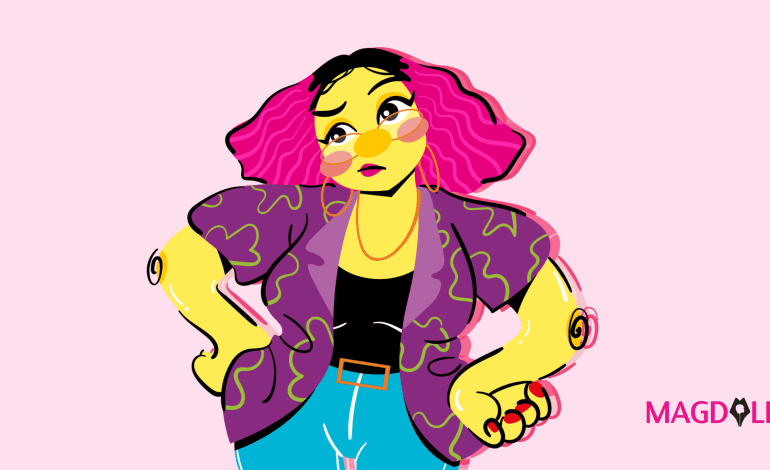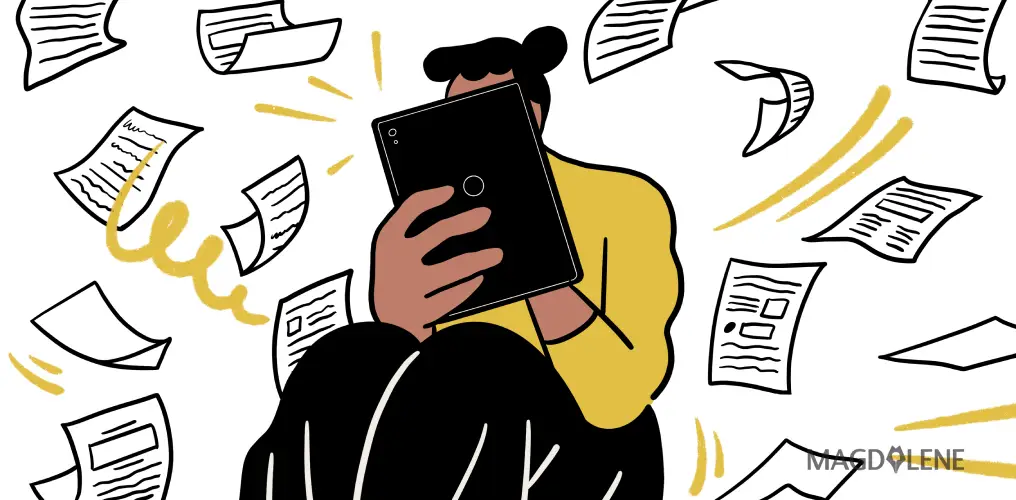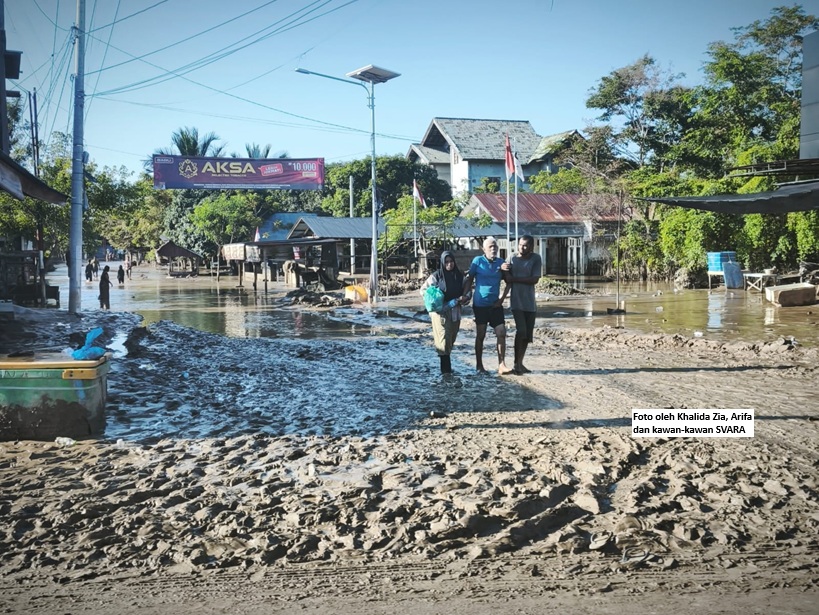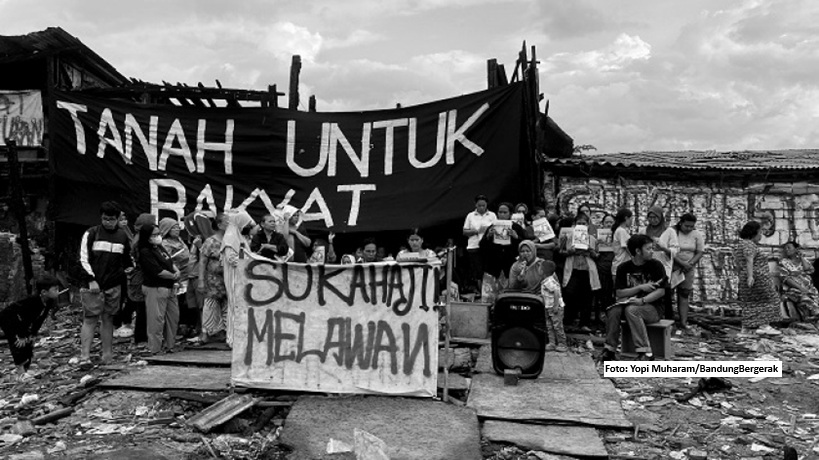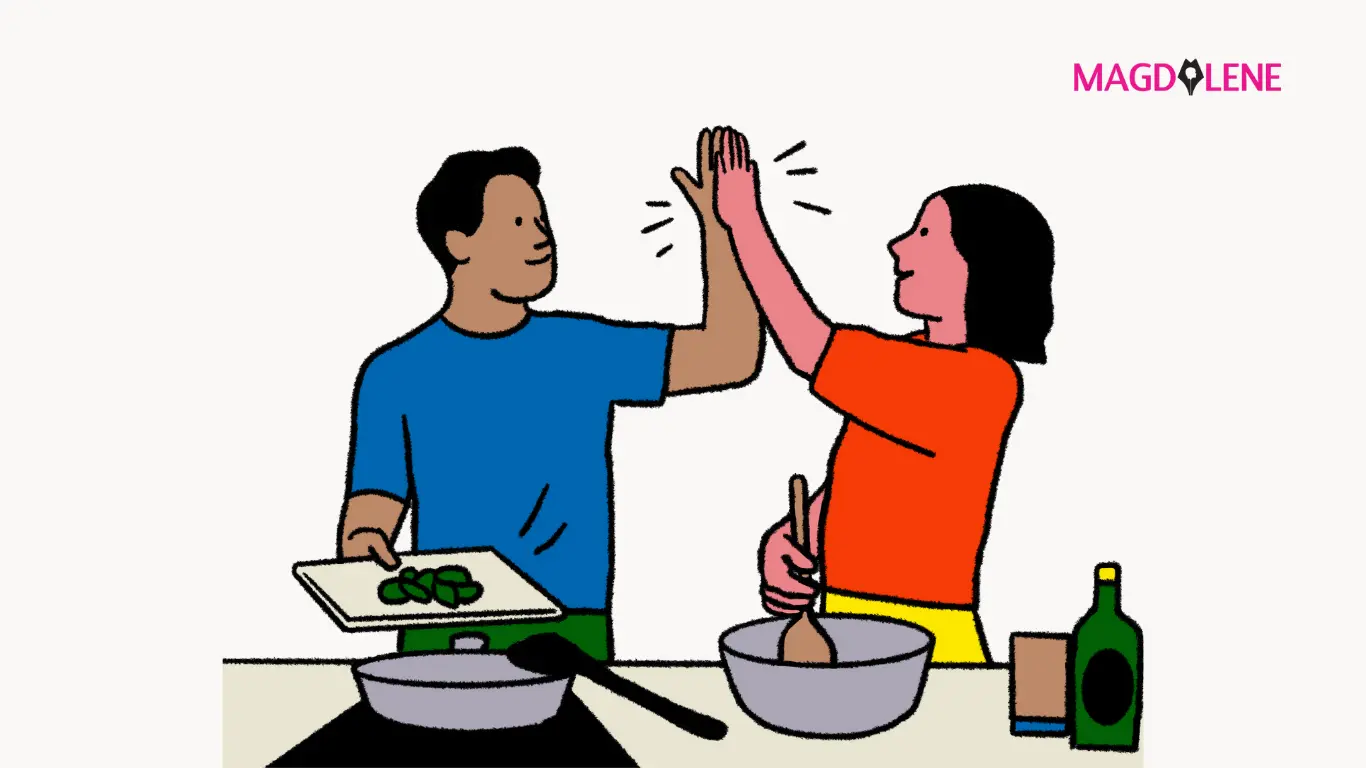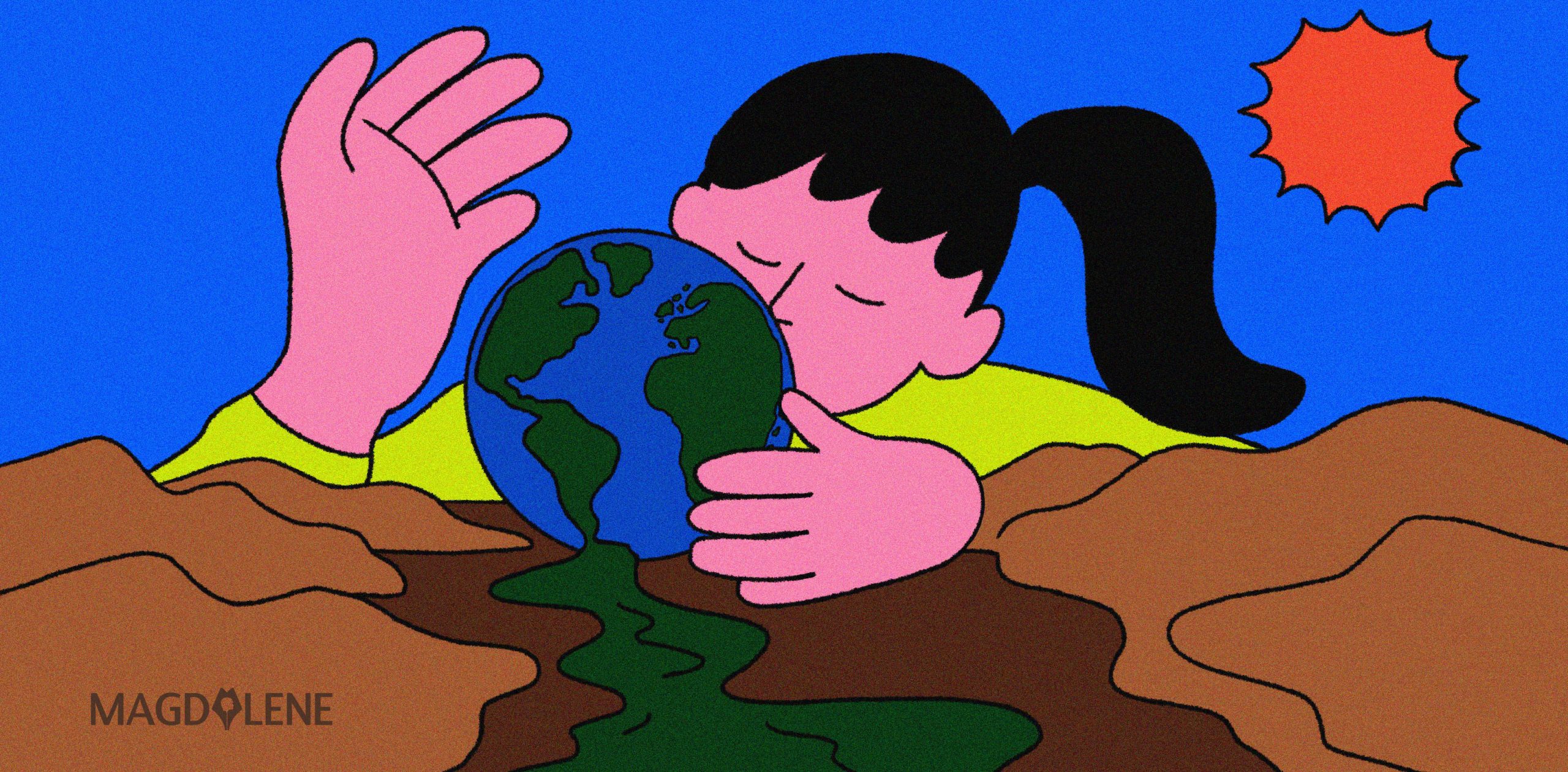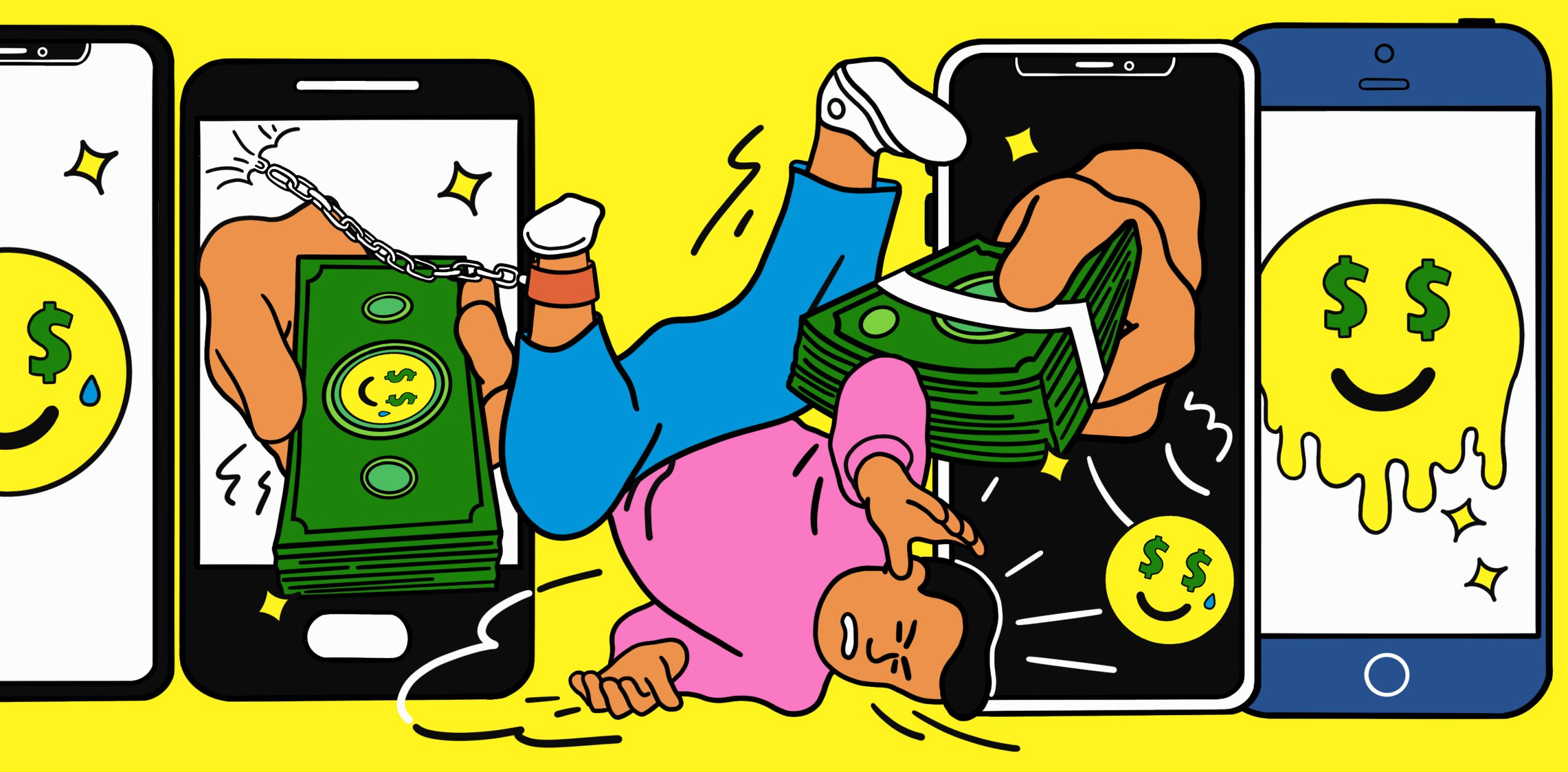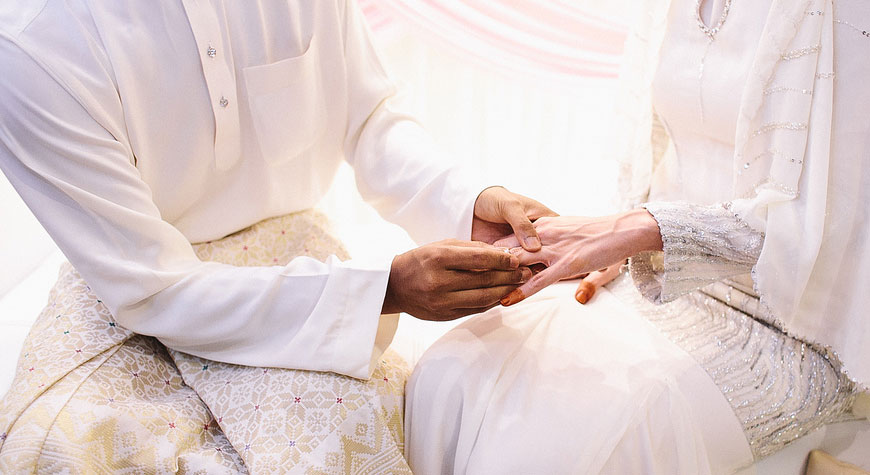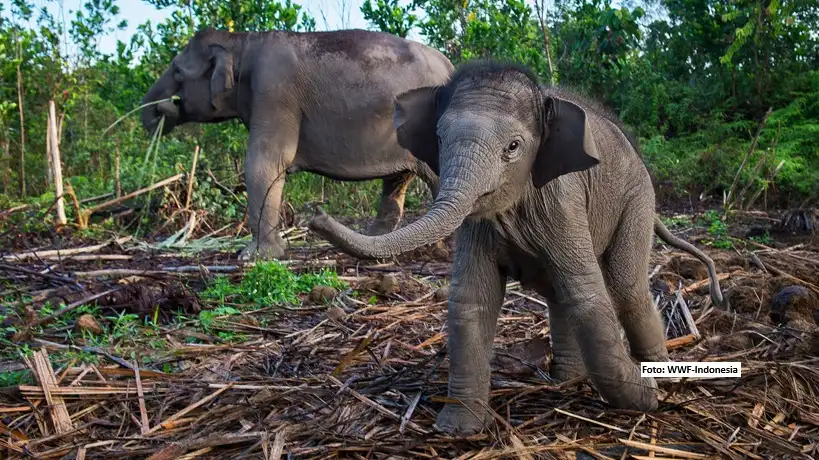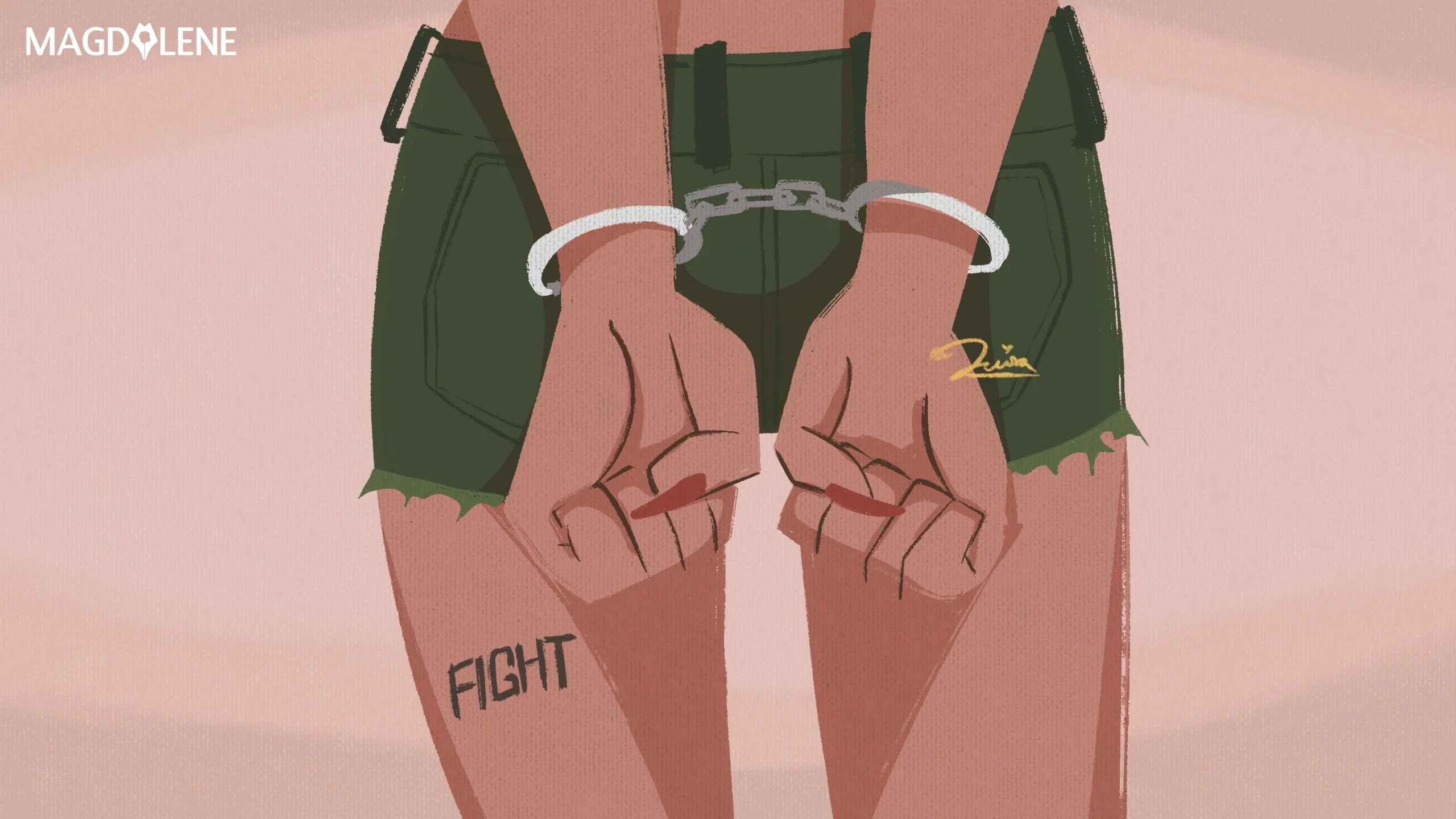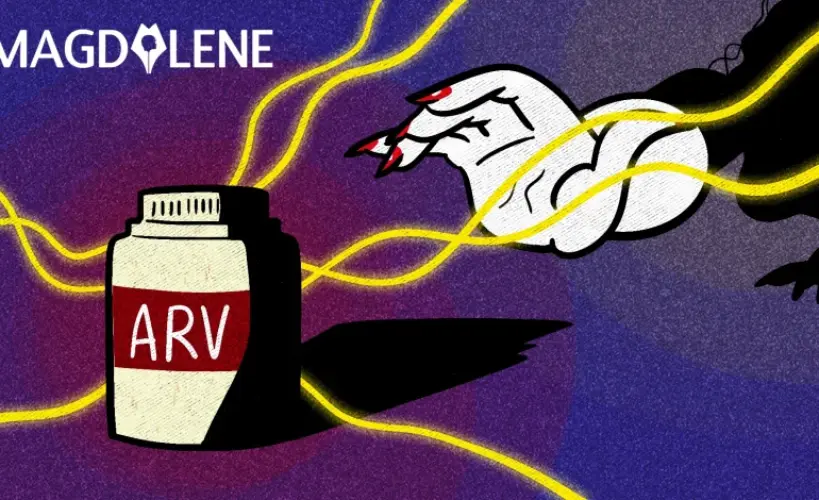How Influencers Alter The Face of Beauty Industry
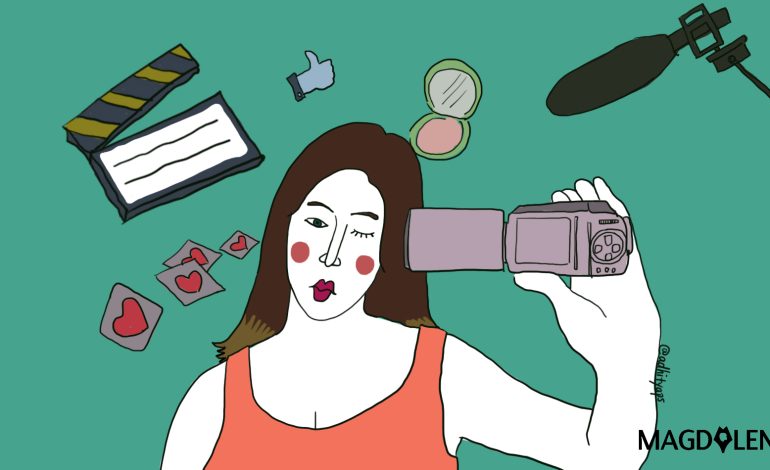
In between living her life as a university student, Ferrari, 19, spends her time checking Instagram and TikTok. She usually does this late at night and continues until she falls asleep. Her thumbs move effortlessly as she catches up on her friends’ lives. Some show their meal, some post photos of themselves hanging out, and others some parade their cute pets.
Ferrari does not only follow the latest updates from her closest friends, she also keenly observes the daily activities of some influencers. She follows around 15 influencers on her instagram account, each supplying her a daily dose of content on the latest beauty products, makeup tricks, and beauty treatments on promo.
“I have sampled this product for two weeks, and it really helps my skin,” says one influencer, holding a pipette to apply a drop of facial serum on her face.
“This concealer is my favourite! With one swipe, all imperfections are covered!” Claims another influencer naming the products along with a link to direct the likes of Ferrari to an online market place.
A few years prior, this scenario, which has become a part of Ferrari’s day, was not so common among skincare and makeup fans. To get information on the latest beauty products, the claims of said products for the skin, or how to apply makeup, they would have to leaf through pages of lifestyle magazines.
Now the face of the beauty industry has changed: famous names on the cover of lifestyle magazines have lost their clout to social media influencers.
“How we consume information has changed,” says Margaretha Untoro – Margie for short. Margie is the former editor-in-chief of Dewi, a fashion and lifestyle magazine that has been around since 1991. “Regardless of whether or not it’s a good thing, that is what the public wants, so we all have to follow the trend,” she adds.
A decade ago, when Margie first set foot in the media industry, there were already predictions that print media’s role as a source of information, including lifestyle and beauty information, would be replaced by online media. Now, even online media is being disrupted by social media, the “home” of beauty influencers.
Margie attributes the rise of social media beauty influencers is supported by the massive use of Instagram and the popularity of reality series such as Keeping Up With the Kardashians, a new wave of television storytelling that takes viewers behind the scenes of a public figure’s life, making them accessible to everyone
“Now media is no longer about legacy brands or publications, rather it is about personality. [Influencers] have personality. They can better relate to their audience. They have a personality that we can relate to, and we feel as if we can befriend them online or in real life. And unlike brands that has no face or personification, they can also be a role model,” Margie adds.
In itself, the strategy to get celebrities to advertise products or services is not new. In 1854, Cadbury – the chocolate brand from England – came out with an attention-grabbing ad. In the ad, Queen Victoria, who ruled the UK in 1837-1901, was seen enjoying a chocolate drink. Since then, businesses began adopting the strategy of using celebrities and public figures in their advertisements. In the 1920s, American actresses such as Joan Crawford, Clara Bow, and Janet Gaynor frequently appeared in advertisements to promote various products, according to historian Stephen R. Fox in his book The Mirror Makers: A History of American Advertising and Its Creators (1984).
The strategy continues today with businesses collaborating with public figures in various ways and forms. On the street, in public transportation or other public spaces, their faces glow on traditional and digital billboards and electronic panels. Open your browser or some applications on your personal computer or gadgets, and these ads follow you along virtually.
The strategy makes perfect business sense. According to the 2015 article “Do Famous Faces Capture Attention?” published in the journal Advances in Consumer Research, celebrity presence in advertisements can improve the attractiveness of the ad and draw more people’s attention. Moreover, celebrities-filled ads also bring in the money. Endorsement marketing is today a lucrative industry. Forbes projected the influencer marketing industry to be worth US$15 billion in 2022.
The use of endorsements to market products or services has been a steady growth. The strategy has shifted, however. If over decade ago brands specifically target celebrities from showbiz industry, now they include those who are famous online, the so-called influencers. Defining the latter, however, is not as clear cut as those who have come to be known for their voice, or their acting or modelling stints.
So what is the parameter that defines an influencer? In the literal sense, according to Merriam-Webster, an influencer is someone who inspires others to do something. This means, then, to receive the label of an “influencer” it’s not enough to have thousands of followers only.
According to the journal Authenticity Under Threat: When Social Media Influencers Need To Go Beyond Self-Presentation (September 2020), social media influencers are defined as those who have expertise in specific domains of interests, among which are fashion, photography, travel, lifestyle, and others.
“In general they are regular social media users, who have managed to build many followers through good storytelling around their interests and lifestyle,” Marijke De Veirman, et al. in International Journal of Advertising: The Review of Marketing Communication. “Regular social media users” imply it is an open and level-playing field for everyone.
Vivi Octalia, 25, is one of them. It started out of her love for wearing makeup since her university days. She began to use her free time to try different makeup styles, the process of which she documented and posted on her Instagram account.
As she actively created and published makeup-related contents, she decided to join Vivi a makeup lovers community on the messaging app LINE. The head of the community, according to Vivi, is often approached by beauty brands that offer their products for free to be reviewed the community members. By now Vivi has received numerous collaboration offers from beauty brands and her Instagram account has 17,000 followers.
Vivi’s journey to becoming an influencer start from her hobby that evolved into her livelihood, similar to Vania Tirza’s experience. Since 2017, Vania has been actively testing various skincare products to treat her acne-prone skin. She discovered that many of her social media followers have the same skin condition as her. After receiving many questions around her skincare reviews, Vania created a new Instagram account, @beautyandacne, dedicated to reviewing skincare products.
In five years, she has attracted 20,000 followers on Instagram. Every month about 10-15 beauty brands contact her for collaborations. She usually accepts eight contracts a month, so she can truly sample the products and pay careful attention to their benefits for her skin.
“At first, those brands do what is called review barter, a quid-pro-quo where brands would send us free products and we review them for free. But after a while, I received so many offers from all different kinds of brands. I only have one face, so I have to try each product carefully. Now I set a rate, so there is a price,” she explains. She has since made it her full time job to work with beauty brands.
Vivi and Vania show that being an influencer is an actual profession, aside from identity. And they all started out as regular social media users who did beauty products reviews on social media consistently.
Says Amalia Hayati, researcher and co-founder of Venas Consulting, a data providing agency for beauty brands: “We in Venas see that grouping influencers based on the number of their followers is not sufficient. We don’t know who they are, so we cannot define the influence they have on others just from the number of followers they have.”
Instead of judging an influencer’s clout by the number of her or his followers, Venas Influencer Report 2021 has mapped out six categories of influencers based on their characteristics and expertise, explains Amalia, started her career in the local beauty industry in 2009, as a contributor in Female Daily.
First is the advocate, or those who have access to limited insider information as well as those with strong ties to certain brands.
Second is the content creator, or the master storytellers who generally package an information into easily digestible, snackable content, whether in more personal messages, attractive visual, or infographics.
Third is the industry expert. In the beauty industry, these people include editors of beauty media or practitioners with years of experience. The people in this category have the capabilities to deliver issues in depth thanks to their industry expertise.
Fourth is the dermatologist, formulator, as well as those with credentials in the beauty industry. Industry leaders belong in this fourth category. The last two categories are partner or beauty business owners, and celebrities who undeniably still have the widest reach up to now.
Influencers generally do not work on their own. The descriptive and informative content they create are fueled by paid sponsorship. The sponsors vary from beauty brands, e-commerce that sell beauty products, to aesthetic clinics.
I only have one face, so I have to try each product carefully. Now I set a rate, so there is a price
Sponsorship comes with strings attached so the influencers are bound to be biassed in delivering of their message. This paid sponsorship culture is so prevalent in the influencer work system, that while gathering information for this piece, a majority of influencers we’ve identified for interviews – who can share their experiences and point of views – downright refused to be interviewed after finding out they won’t be paid for being a resource person for this journalistic project.
The strong monetary aspect of influencer culture and the ease with which one can become an online influencer give rise to important questions: can influencers’ curation offers solution in navigating the red ocean of beauty products? What are the changes in the industry dynamics since the rise of influencers, and what problems have arisen?
Also Read: 6 Feminist Influeners That Will Change the Way You See Yourself and Others
Surrounding Education and Promotion
Magdalene’s survey conducted in June finds 53.8 percent out of a total 725 respondents say they are affected by influencers both local and international when it comes to their self-care rituals. Only 6.76 percent mentioned magazines as a source of beauty information, with most of the respondents being in the 43-57 year old age group.
Ferrari is one of those inspired by influencers. When her favourite influencers such as Cindercella and Sarah Ayu promote a certain product, she tries to find out more by Googling the product to help her decide on whether or not to buy it.
“If you ask me how influential those [influencers] are, I’d say very. I learn tips bout makeup from them, the products that I want [to buy] also have to first be approved by them,” says Ferrari, who lives in Bekasi, West Jawa.
Elysa, 47, echoes Ferrari. Since no one close to her wears makeup or skincare, she previously never felt the urgency to wear beauty products except when attending important events. But in 2018, she started to change her mind. Now Elysa sees wearing beauty products, especially skincare, as a form of self-care. The housewife who hails from Masamba, South Sulawesi, now never forgets to apply sunscreen during the day and serum in the morning and at night.
“What influences you?” I ask her.
“Social media shapes my awareness. Is it purely because I watched a video by Suhay Salim? Maybe,” she says, referring the popular beauty vlogger.
Elysa continues, “[Suhay Salim] applies it into practice. This is how you use serum correctly, or when she reviews a product, it’s truly live, so we see and we understand. My brain stores the information I see on social media and that builds an awareness that this information is useful for me.
For Elysa, who the source of information is does not matter as much, more than the type of information. “For me, it’s about the content, the material. Whoever the person behind it is I don’t mind, even if they’re not an influencer.”
Both Elysa and Ferrari get their information on beauty from influencers. The difference is that Ferrari thinks influencers have a higher degree of expertise than normal people, so she tends to consider their opinion over the opinions of her friends, for example.
Researcher Amalia Hayati, influencers enrich the information on products that otherwise is provided within their packaging or by their sales representative in the store, for example. They give consumers second opinion on the products, aside from the marketing claims made by the producers.
“In the past the media tend to provide information that is not very diverse. But when we talk about beauty, there are many factors, such as age, lifestyle, skin types. Now in this era, we can look for influencers with [skin] characteristics that are similar to us. So we can look for recommendations that would suit us more,” Amalia adds.
But influencers can be a double-edged sword particularly to the beauty brand. If the effect of an influencer’s contents to the audience is interpretative, the impact to stakeholders in the beauty industry is calculative and numbers are important metrics.
To understand the role that influencers play for beauty companies, I ask a representative of Sensatia Botanicals, a nature-based cosmetics company from Bali with stores in Jakarta, Bekasi, Bandung, and Surabaya, aside from the island itself.
Kunti Puspita Sari, Marketing Communications Manager for Sensatia explains that the company doesn’t prioritize on working with influencers. Only 30-40 percent of their digital marketing budget goes to influencer marketing and price is a consideration.
“Their [services] are quite expensive,” says Kunti during our talk.
Promoting with influencers does not always produce a good result, she says. “We can’t really talk about [the result]. It depends on the campaign and the influencer,” she continues.
She cites one experience of getting a beauty creator to promote Sensatia’s products informally. The creator happened to appreciate it and promoted the products heavily. Unexpectedly, the product endorsed became a hit, despite the slow beginning. But on another occasion, Sensatia formally collaborated with an influencer – contracted and paid – but the endorsement didn’t have a significant impact to sales.
Now Kunti sees influencer marketing as similar to ad placements in conventional media. Often the return is indirect, such as building awareness, similar to putting up ads on magazines or billboards.
This is echoed by Dr. Laksmi Trimurti from Gloskin Beauty Clinic, who says that beauty treatment services can often be seen as intimidating to the public. Influencers can play a role in planting the seeds of awareness on certain beauty products and the effects felt after the treatment.
It’s reasonable for beauty businesses to assume that to be relevant they must use influencers for marketing. Yet, Republic of Soap, a body care brand from Bali that was founded in 2003, chose a different route to ensure the survival of its business. John Marciano, owner and COO of Republic of Soap says his business never spends a dime on any influencer for promotion. Relying entirely on the power of word of mouth, the Republic of Soap store in Denpasar continues to be frequented by people – I witnessed this during my visit in July.
“My focus is not in marketing but in creating good products. If you do that, this product will speak for itself,” Marciano says when I ask him about his decision to not work with influencers.
Marciano, an American entrepreneur who has lived in Bali for over 20 years, also says that he and his team often do not recognise influencers when they come to the store. “I usually don’t know if they have 2 or 20 million followers. Sometimes they are just regular people, they come in, and they have fun,” he continues. If the customers have a good experience in the store, whether or not they’re influencers, John believes that they will freely “advertise” for the product.
Philosophically John states that the vision of Republic of Soap is not to introduce the brand to as many people on earth. He says, “The goal is not rapid growth. When you force everything to be instant and inorganic, you will lose the soul, intention, vision, and ethos that you used to have.”
But Republic of Soap may as well be an anomaly in the highly competitive space. In the last few years, local cosmetics and skincare brands even use South Korean celebrities as their brand ambassadors to reach local fans of K-pop celebrities. Everwhite, for example, uses Kim Seon-ho as its brand ambassador, Somethinc is represented by Han So-hee, and Lee Min-ho is now the face of Azarine.
Republic of Soap can resist influencers because of their Business to Business (B2B) model, supplying soap and other body care products to luxury hotels in Bali. Its geographic location in Bali, a major world travel destination, may help as well.
For other brands, whether they operate online or offline, paying influencers who dominate the virtual space is probably the only way to continue being relevant and not left behind.
Also Read: The Impossible Double Standard of Effortless Beauty
Influencers and Beauty Standards
“I used to feel like in magazines everyone looks the same. They’re all flawless, with fair skin and straight hair,” Vania tells Magdalene.
“But these days, when we see Instagram or TikTok, those who become beauty influencers can hail from all different kinds of backgrounds with all kinds of physical appearance. There are some with darker skin, or curly hair,” She continues.
With her acne-prone, sensitive and oily skin, Vania has become one another online figure in the beauty industry who can build a following without having to adhere to the unrealistic and uniformed beauty standards.
“I don’t want [social media users] to follow a beauty standard, and then force themselves to look like that to feel beautiful. I think with the presence of beauty influencers, beauty standards are now more diverse. People can see that they are not the only ones; there are those who are just like them and they are still beautiful,” She says.
These days local beauty industry has become more inclusive. Definitions of beauty have become more varied and diversity is more normalised. On the other hand, according to clinical psychologist Anggita Bona Panjaitan, personal biases continue to make it hard for some of us to find beauty in ourselves.
“Although now women with darker skin, for example, are more accepted and are considered beautiful, there are still people who don’t see beauty that way. There are still those who consider fair skin as beautiful. What we haven’t eliminated is this culture of social comparison, comparing ourselves with what we see other people are like, the people whom we are exposed to,” Anggita explains.
Magdalene’s survey results confirmed this. A total of 58 percent of respondents who say they would like to change the shape of their face and body named influencers as one of their beauty references.
For Ferrari, who wishes she could change the shape of her body but cannot afford to do it, to feel beautiful, she understands that the change also needs to come from within. “I like to paint, and I want to be more confident to paint my face. Seeing Cindercella and Sarah Ayu with their trademark colourful makeup motivates me to do what I like, even if the people around me are against it. I feel they are my people,” Ferrari says.
As influencers continue to take over the role of conventional media, their impact can be encapsulated in one principle: we are what we consume and the intention of our consumption. It may be hard to avoid influencers on social media, and the impact they make is different from one person to another.
What we haven’t eliminated is this culture of social comparison, comparing ourselves with what we see other people are like, the people whom we are exposed to
Having an reflective inner dialogue may help, Anggita suggests: What is our conception of beauty? How beautiful do we have to be? How important is it to be a beautiful person? Moreover, is our lives only about beauty? What can give our lives meaning aside from beauty?
When we internalize this reflection, whatever disruption in the beauty industry will not affect the way we feel about ourselves. Looking at our reflection in the mirror, we can still smile and feel beautiful. After all, we use beauty products to feel beautiful. So why do allow those same products make us feel as if we’re never enough?
This journalism project is supported by Meedan, a non-profit organisation with a vision to strengthen digital literacy and global journalism.
Other reports from our Beauty and Technology Series can be found here:
- Technology and Problematic Beauty Obsession
- Dysmorphia Filter: Catch-22 or Acceptable Progress?
- How Influencers Alter The Face of The Beauty Industry
Editor-in-Chief: Devi Asmarani
Managing Editor: Purnama Ayu Rizky
Editor: Aulia Adam
Reporter/ Researcher: Aurelia Gracia, Jasmine Floretta, Vania Evan, Theresia Amadea
Graphic Design: Jeje Bahri
Camera Operator and Editor: Tommy Trdkr
Web Developer: Denny Wibisono
Social Media: Siti Parhani
SEO Specialist: Kevin Seftian
Community Outreach: Paul Emas
Community Outreach Assistant: Tenny Maria
Digital Media Assistant: Chika Ramadhea
Analis Data: Wan Ulfa Nur Zuhra (IDJN)


